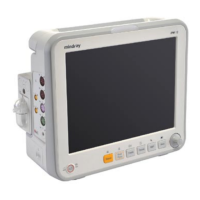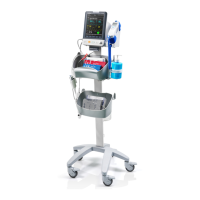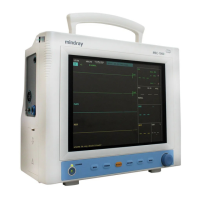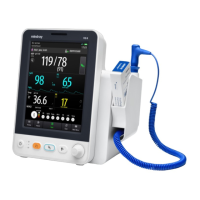9-3
9.3.4 Lateral Chest Expansion
In clinical applications, some patients (especially neonates) expand their chests laterally,
causing a negative intrathoracic pressure. In these cases, it is better to place the two
respiration electrodes in the right midaxillary and the left lateral chest areas at the patient’s
maximum point of the breathing movement to optimize the respiratory waveform.
9.4 Understanding the Resp Display
The waveform area and the parameter area are unnecessarily in horizontally parallel. By
selecting the waveform area, you can enter the [Resp Waveform] menu. By selecting the
Resp parameter window, you can enter the [Resp Setup] menu.
NOTE
z Respiration monitoring is not for use on the patients who are very active, as this
will cause false alarms.
9.5 Changing Resp Settings
9.5.1 Choosing the Respiration Lead
In the [Resp Waveform] menu, select [Lead] and toggle between [I] and [II].
9.5.2 Setting the Apnea Alarm Delay
The apnea alarm is a high-level alarm used to detect apneas. You can set the apnea alarm
delay time after which the patient monitor alarms if the patient stops breathing. In the [Resp
Setup] menu, select [Apnea Time] and then select the appropriate setting.
Resp lead label
Respiration rate
Gain

